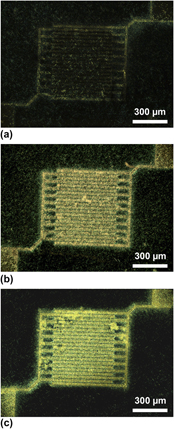Article contents
Electrostatic charging and manipulation of semiconductor nanowires
Published online by Cambridge University Press: 23 June 2011
Abstract

It was observed that silicon and germanium nanowires can exhibit significant electrostatic charging and respond strongly to externally applied electric fields. This includes nanowires in air and dispersed in low-conductivity, low-dielectric-constant solvents such as hexane, toluene, and benzene. The electrostatic charging of semiconductor nanowires was investigated as a tool for nanowire manipulation. By charging a substrate, nanowires could be deposited on surfaces with very high coverage and onto selected locations of the surface. The density of deposited nanowires could be adjusted systematically by varying the strength of the electric field. Alternating electric fields, applied between two electrodes, resulted in nanowires oriented with respect to the field orientation.
Keywords
- Type
- Articles
- Information
- Journal of Materials Research , Volume 26 , Issue 17: Focus Issue: Nanowires: Fundamentals and Applications , 14 September 2011 , pp. 2305 - 2310
- Copyright
- Copyright © Materials Research Society 2011
References
REFERENCES
- 6
- Cited by




